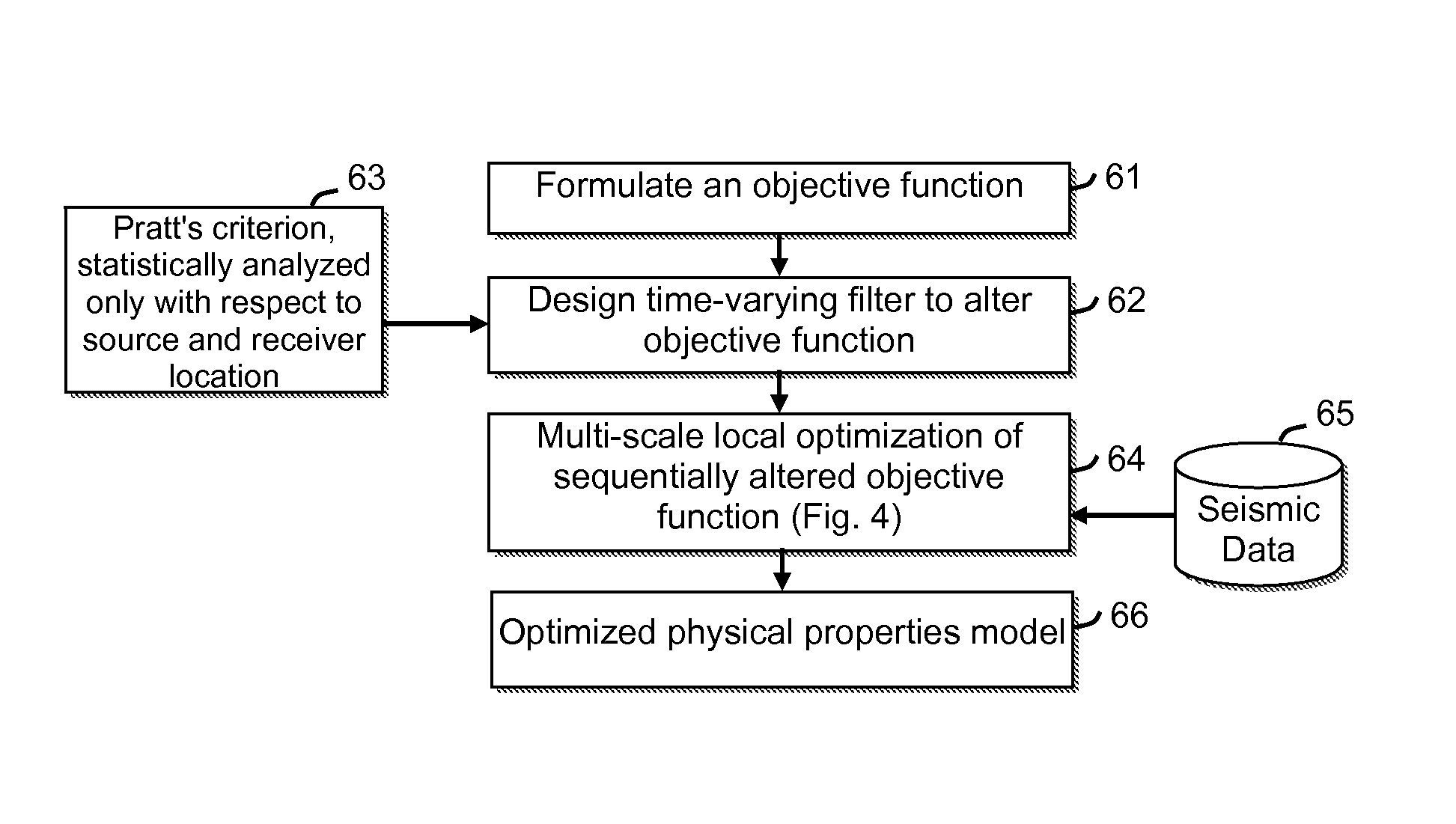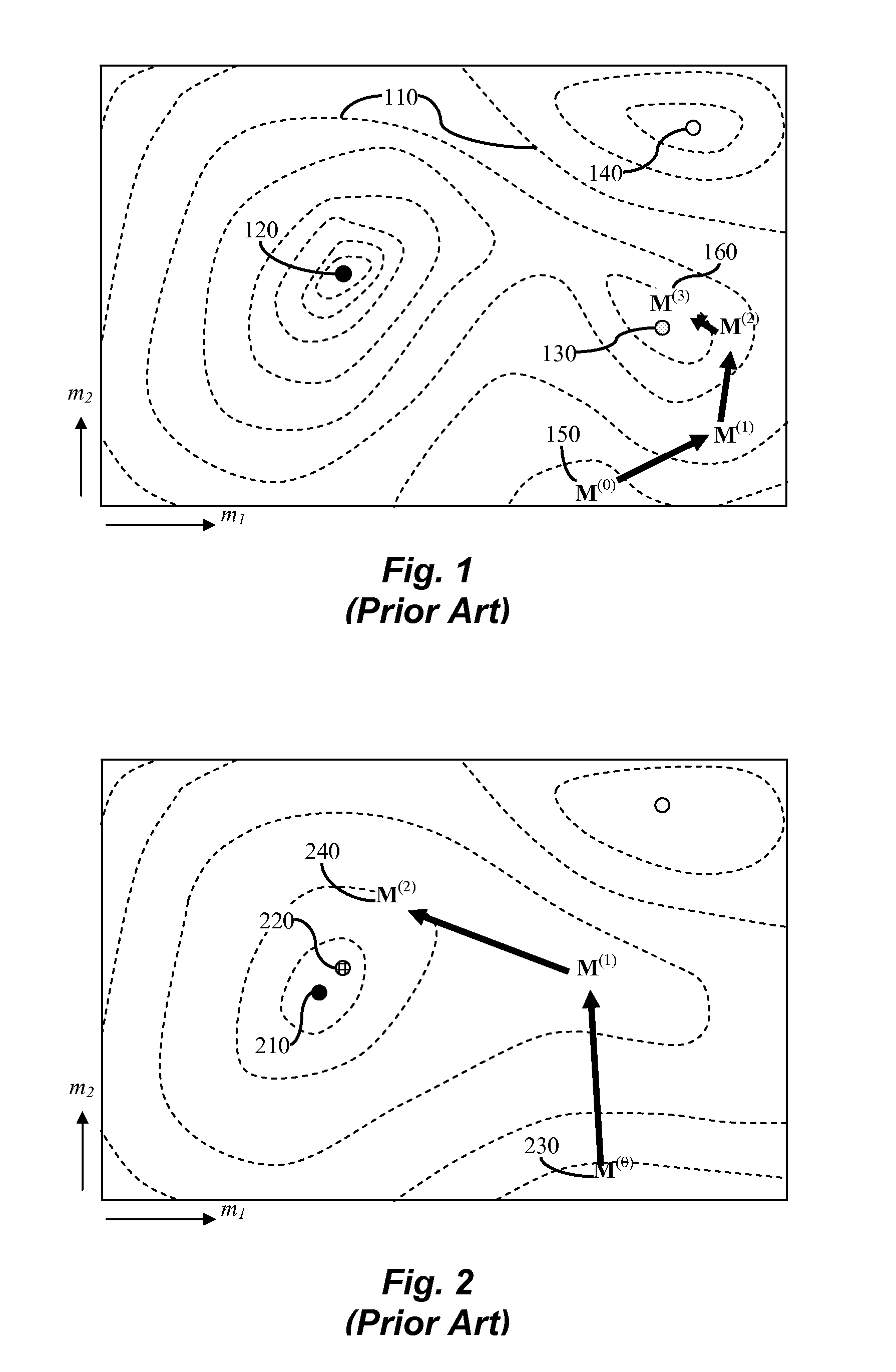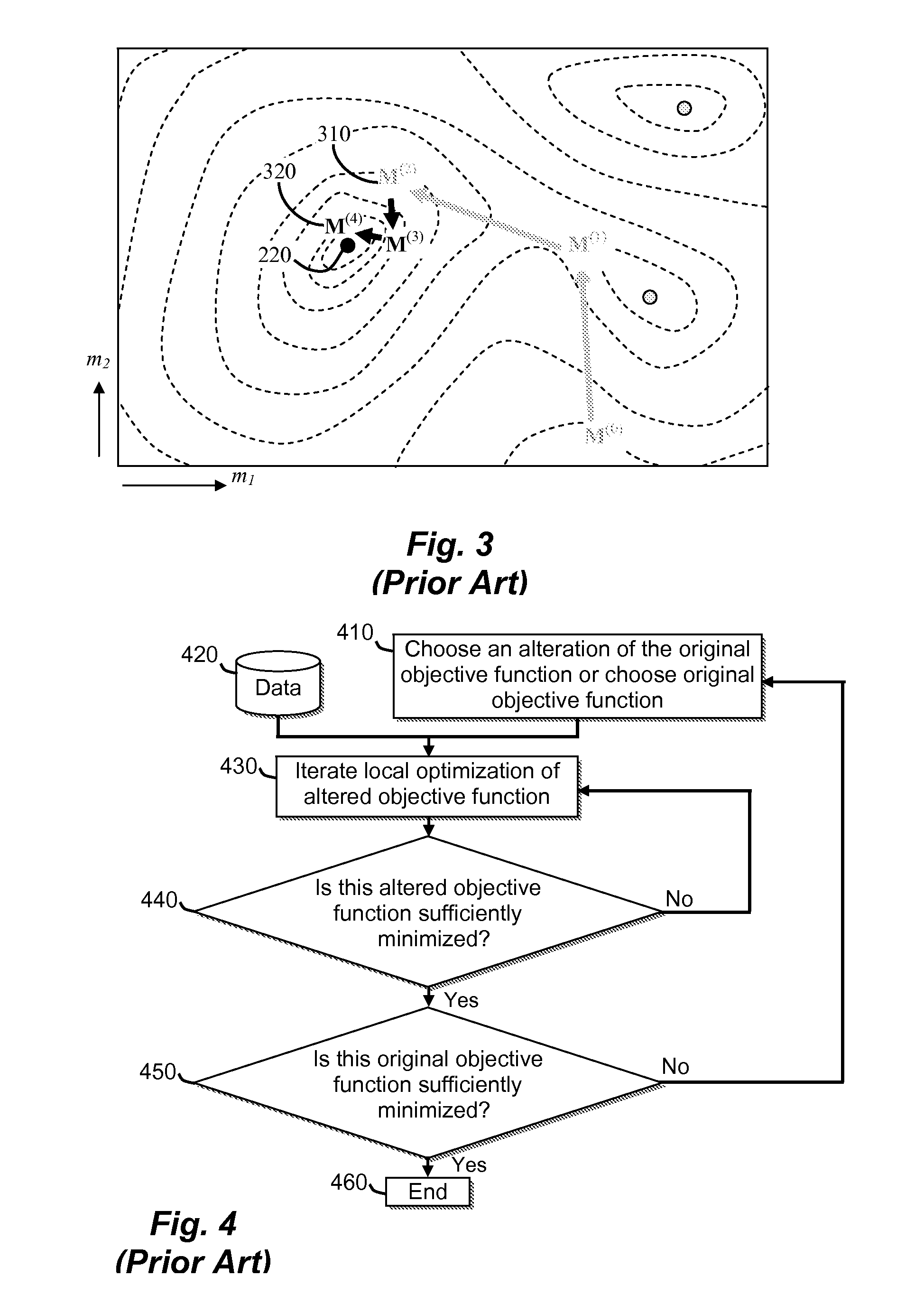Full wavefield inversion using time varying filters
a filter and wavefield technology, applied in the field of numerical inversion of seismic data, can solve the problems of many minima of objective functions, increased computation cost, and many wrong solutions, so as to reduce the number of iterations and reduce the cost and compute time.
- Summary
- Abstract
- Description
- Claims
- Application Information
AI Technical Summary
Benefits of technology
Problems solved by technology
Method used
Image
Examples
example 1
[0049]This implies that this particular time varying filter performs no filtering at time zero. The off-diagonal elements increase for increasing rows in the sub-matrix, implying that the high cut frequency of this time varying filter decreases with increasing time. Notice that the traveltime error could be viewed as functions of the source or receiver. In this case, this method could be applied in a more general manner than just a simple time varying filter. For example:[0050]1. The traveltime error is often not just a function of traveltime, but is also often a function of the offset between the source and the receiver. If this is the case, it would be advantageous to use different time-varying filters for different source receiver offsets. As iteration proceeds the filter would be relaxed as the accuracy of the model increases.[0051]2. The traveltime error is often a function of the time dip of the data in the source and / or receiver domain. This can happen because steep time dips...
PUM
 Login to View More
Login to View More Abstract
Description
Claims
Application Information
 Login to View More
Login to View More - R&D
- Intellectual Property
- Life Sciences
- Materials
- Tech Scout
- Unparalleled Data Quality
- Higher Quality Content
- 60% Fewer Hallucinations
Browse by: Latest US Patents, China's latest patents, Technical Efficacy Thesaurus, Application Domain, Technology Topic, Popular Technical Reports.
© 2025 PatSnap. All rights reserved.Legal|Privacy policy|Modern Slavery Act Transparency Statement|Sitemap|About US| Contact US: help@patsnap.com



